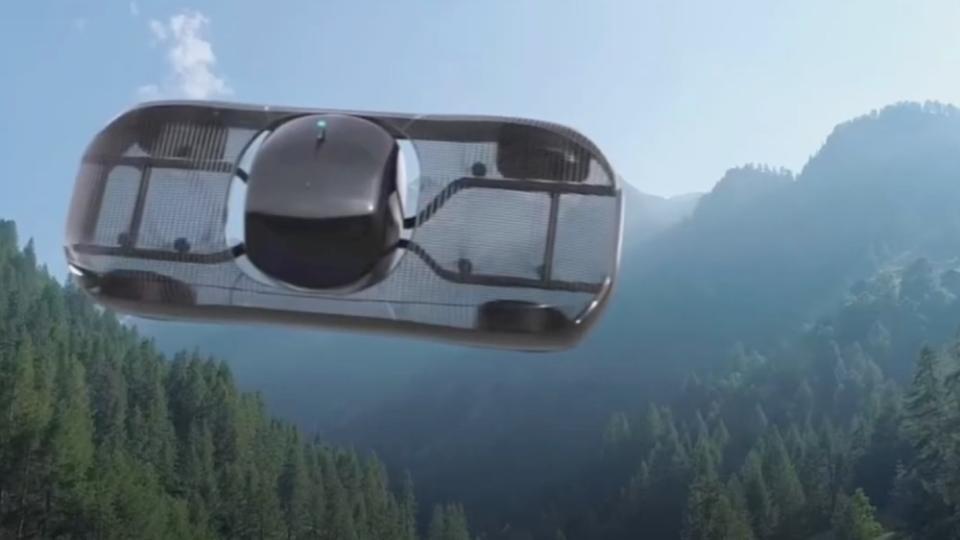Watch: Meet the Model A, the First Flying Car That Actually Drives Like a Car and Flies Like a Helicopter

Alef’s electric Model A, priced at around $300,000, will be the only road-certified flying car that can do vertical takeoff and landings like electric-powered eVTOLs, including the Joby S4, Lilium Jet and Vertical Aerospace VX4.
Santa Clara, California-based Alef recently introduced its two-passenger Model A, saying it would be on “pre-sale” for a deposit of $1,500 in the first quarter of next year. The company says the first deliveries will happen in the fourth quarter of 2025.
More from Robb Report
Flying Cars Are Finally Coming: Here Are 3 That Will Hit the Skies Soon
Two eVTOLs Hit the Skies in One Week, Proving That Emissions-Free Flying Is (Almost) Here
Meet The Airspeeders That Competed in The World's First Electric Air Race

Besides its retro-futuristic look (thanks to Hirash Razaghi who has designed Jaguars and Bugattis) the Model A is different from other flying cars entering the market because of its ability to takeoff and land vertically, and then drive away. A company video (at top) shows the Model A coming up to a traffic obstruction, going into lift mode, hurdling the obstacle, landing back on the highway and driving off, while the other cars are stuck in gridlock. Whether that’ll be legal or not remains to be seen. But that kind of air-pivot has certainly been every driver’s fantasy on a busy commute.

Alef’s executive team includes veterans in engineering and development, with a lead investor who was an early backer of Tesla, a former head of Ford Aerospace and, for public recognition, NBA star Luis Scola. The company says it has been test-flying a full-sized prototype since 2019.
Alef CEO Jim Dukhovny told Robb Report that the Model A was designed for short commutes. “Most commuters typically travel under 30 miles on average,” he says. “We designed it to be the fastest and most convenient transport ever created for both rural and urban settings.” The fact that the wings are integrated into the carbon-fiber body rather than being retractable, says Dukhovny, means the owner won’t have to take off and land at airports. “That can eliminate 50 percent of the travel time,” he says.
While ground-mode resembles a stylized automotive body, the design of the carbon-fiber chassis is its innovation. The two seats, or cockpit, is gimbaled so it tilts 90 degrees forward as the Model A moves into aircraft mode. From the ground, it looks like the aircraft is flying on its side, with the wheels pointed backwards. But the body is actually perforated carbon fiber so the air flows through it, and the wing structure inside is similar to a two-wing biplane. “The biplane is considered a very stable aircraft design,” says Dukhovny.

The Model A is designed with a distributed electric propulsion system, no exposed props, software flight stabilization and all-wheel driving. Eight motors are built into the four wheels for failsafe redundancy. It will also have obstacle detection and avoidance as well as a full-vehicle parachute. Its projected range is 200 miles on the road and 110 miles in the air. The company said the initial top speed of 35 mph will comply with regulations for low-speed electric vehicles. Dukhovny says the speeds will increase as new models of its flying cars move farther through certification.
By 2030, Alef expects to be building the Model Z, which will have a very reasonable five-figure price tag of $35,000—or about $11,000 less than a 2023 Tesla Model 3—with a range of about 400 miles on the road and 200 in the air. And it can do what the Tesla never can—soar above the traffic.
Best of Robb Report
The Chevy C8 Corvette: Everything We Know About the Powerful Mid-Engine Beast
The 15 Best Travel Trailers for Every Kind of Road-Trip Adventure
Sign up for Robb Report's Newsletter. For the latest news, follow us on Facebook, Twitter, and Instagram.

